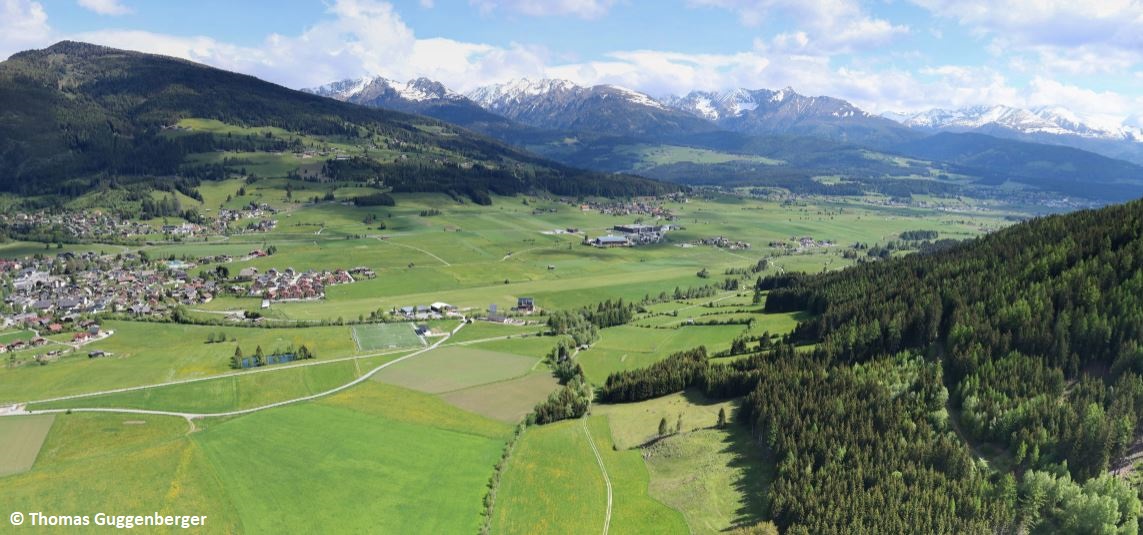In collaboration with SalzburgMilch, the Salzburg Chamber of Agriculture, the Lungau Biosphere Park and a network of 22 organic dairy farms from Lungau, the HBLFA Raumberg-Gumpenstein took part in this project in the form of a case study.
With the Lungau project region, a very extensive type of dairy farming was chosen. The average altitude of the farms is 1,148 m above sea level, there is an annual mean temperature of 5.2°C and the annual precipitation is 720 mm. The dominant land use type is permanent grassland. Some farmers in privileged locations also cultivate cereals (barley and triticale). The average stocking density of the farms is 1.02 GVE/ha, of which around 92% are cattle. The average ration composition is also very extensive with around 5% concentrated feed.
The challenge is to establish a system of local production that is as closed as possible under the harsh alpine conditions. The goals of the case study are to close the nutrient cycles as completely as possible and reduce emissions on the farm. Furthermore, emission-reducing feeding strategies are being developed based on measurements of gaseous emissions in respiratory chambers.
For further information about the project and the case study see: https://www.circularagronomics.eu/







